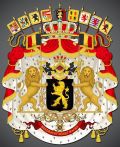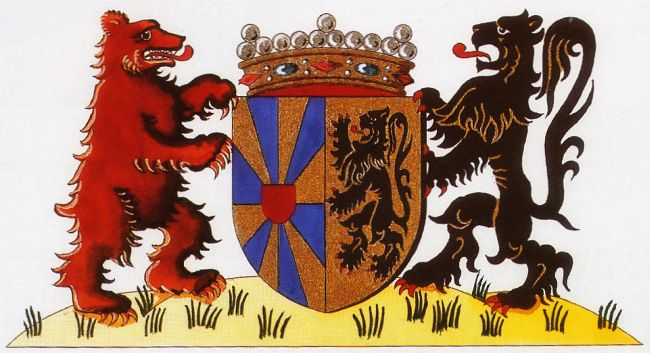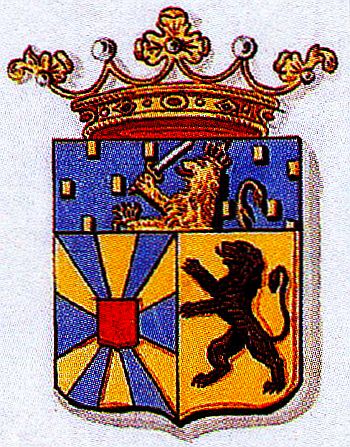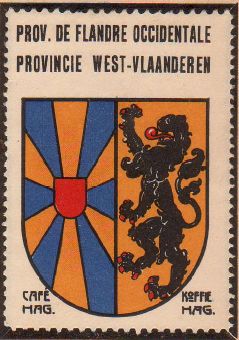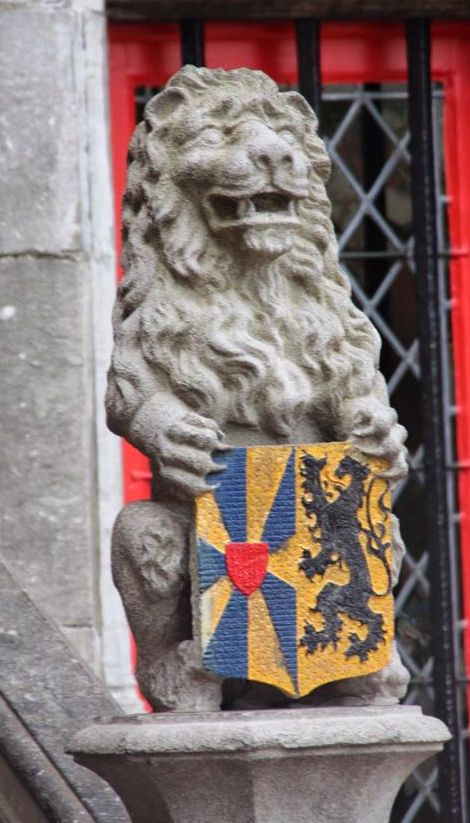West-Vlaanderen
Belgium heraldry portal
This page is part of the Belgium heraldry portal |
Heraldry of the World |
|
Civic heraldry:
|
Other heraldry: |
WEST-VLAANDEREN
Official blazon
- (1816) Parti, het eerste deel gegironneerd van lazuur en goud van twaalf stukken; en coeur een schild van keel. Het tweede van goud, belaaden met een klimmenden leeuw van sabel, getongd en genageld van keel (zijnde Vlaanderen). En chef het opperste gedeelte van 's Rijks wapen. Het schild gedekt met de Nederlandsche Gravenkroon en hebbende tot onderschrift: West-Vlaanderen'
- (1997) Gedeeld 1. gegeerd van twaalf stukken van goud en van lazuur, met een hartschild van keel 2. in goud een leeuw van sabel, geklauwd en getongd van keel. Het schild getopt met een gravenkroon met dertien parels, waarvan drie verheven en gehouden rechts door een beer van natuurlijke kleur en links door een Leeuw van sabel, geklauwd en getongd van keel. Het geheel geplaatst op een met helmgras begroeide duinengrond van natuurlijke kleur.
Origin/meaning
The arms were officially granted on May 27, 1997.
The province of West-Vlaanderen was created in 1816 and the provincial council applied for the 'oldest historical arms of Vlaanderen, used until 1178'. These arms were a shield divided into 8 pieces with a red escutcheon. These arms have been described in several sources and in the late 13th century the arms were mentioned as Oud-Vlaanderen (old Vlaanderen). However, later historical research has shown that these arms have never been used and were probably a 14th century fantasy.
The black lion on a golden field is the true historical arms of the Counts and county of Vlaanderen, and these have been used since the late 12th century.
On October 9, 1816 the arms of Old and New Vlaanderen were combined as the new arms of the West-Vlaanderen province.. The chief showed the upper half of the Dutch Royal arms, similar to the Oost-Vlaanderen province, as Belgium at the time was still part of the Netherlands:
After the Belgian independence the chief was removed. The arms were widely used, but never officially granted. The arms were generally used with the crown of a Count. Only in 1997 the arms were granted, now with two supporters, the bear of Brugge and the lion of Vlaanderen. The composition is placed on a landscape of dunes, as the whole Belgian coast is within the province.
| The arms in the Koffie Hag/Café Hag albums +/- 1930 |
The arms on a tile, 1930s |
| The arms on a road sign +/- 2010 |
The arms on a statue in Brugge, 2014 |
| The arms on a police badge (source) |
Literature : Vries, H. de : Wapens van de Nederlanden, Amsterdam, 1995.
